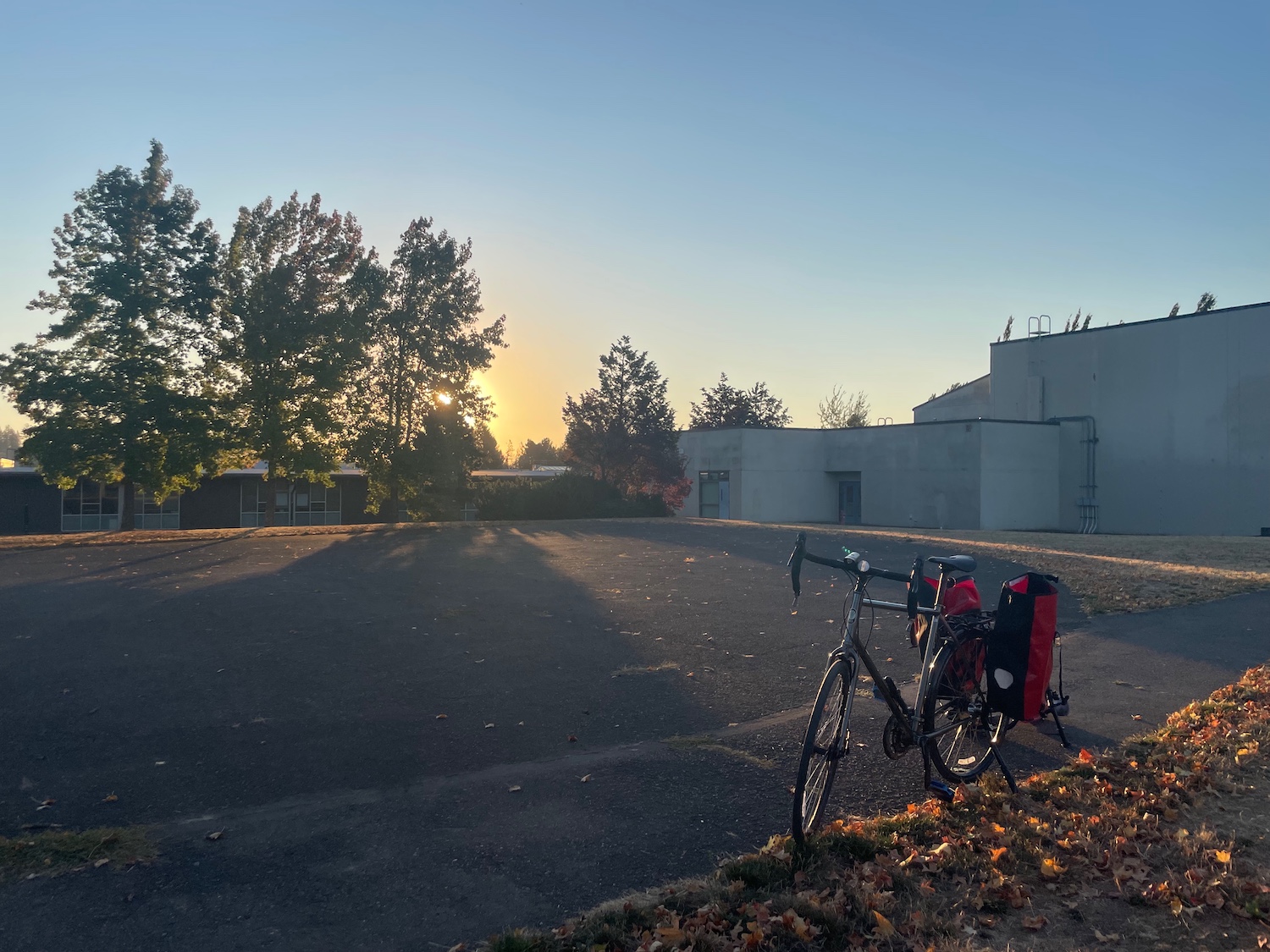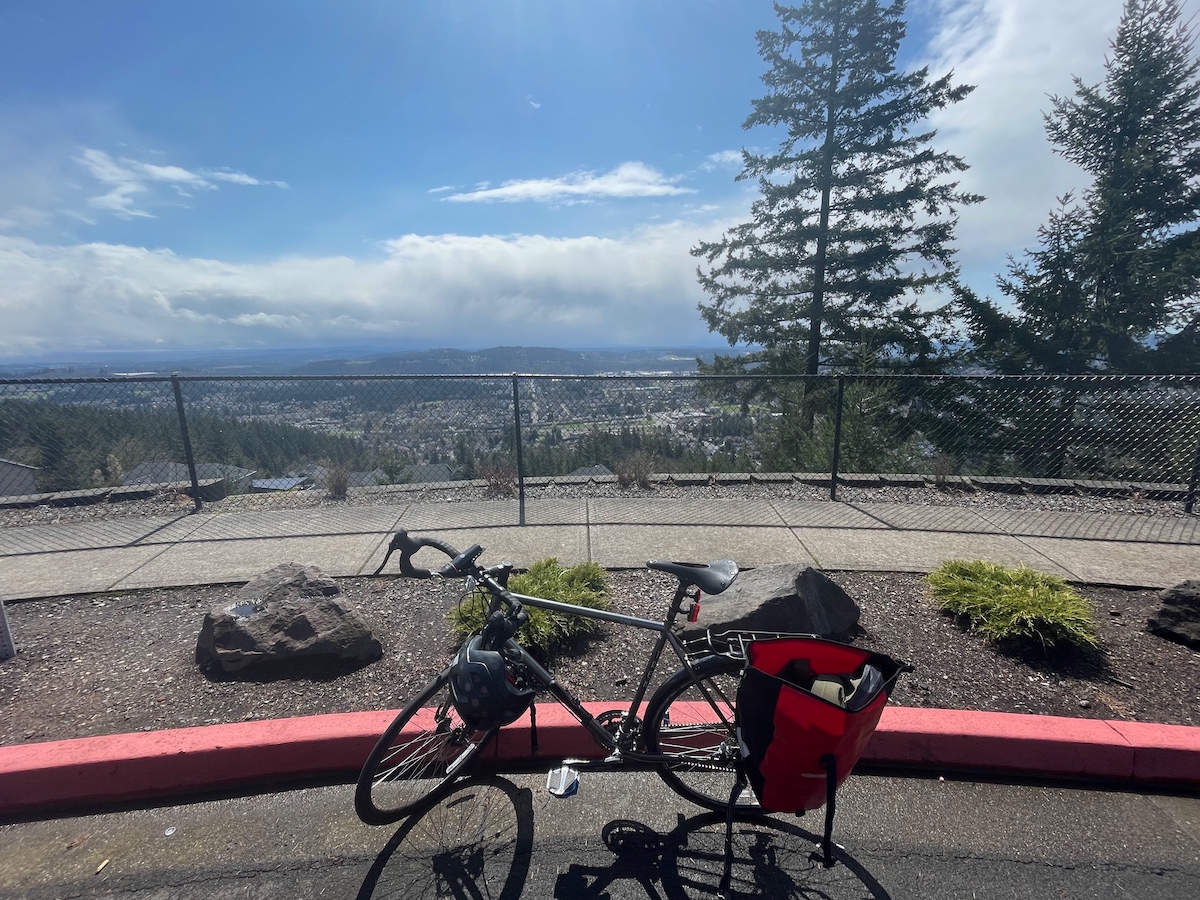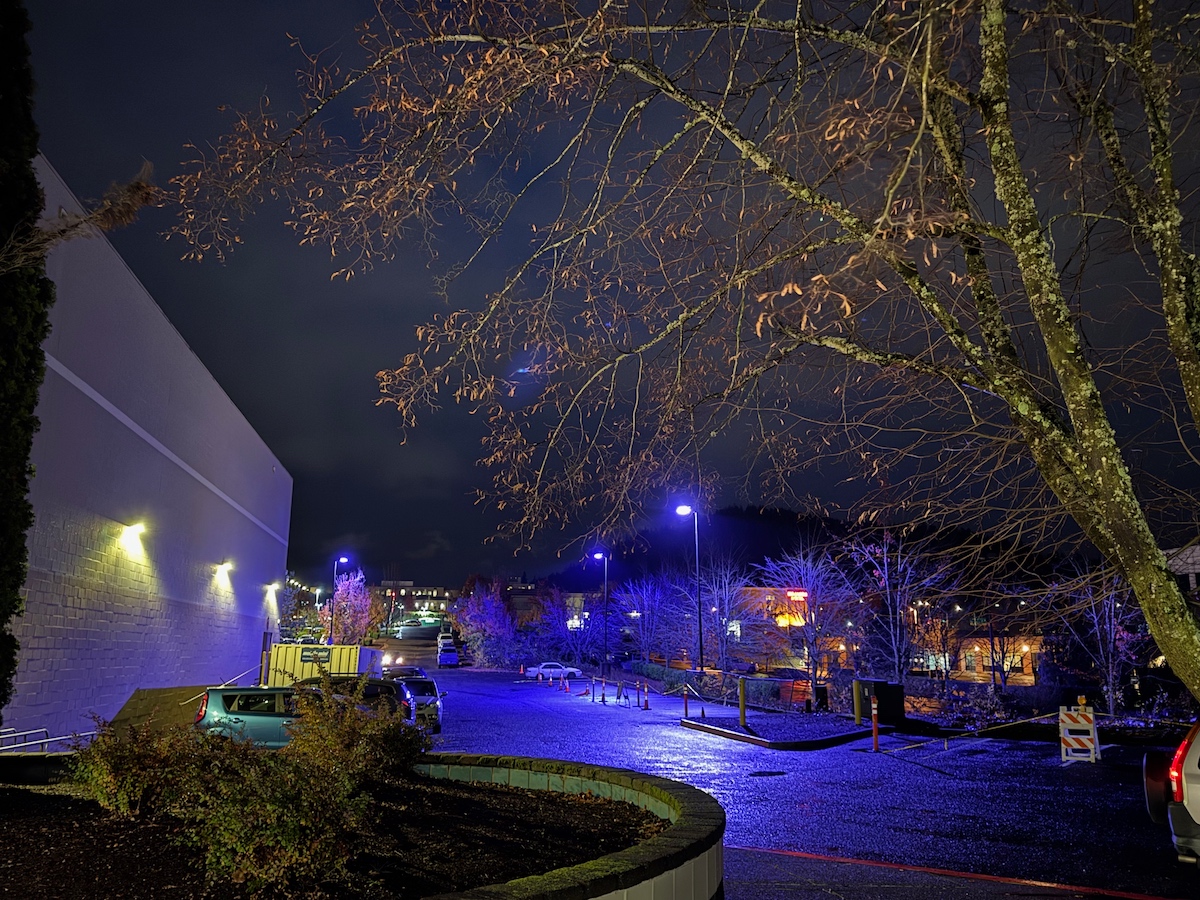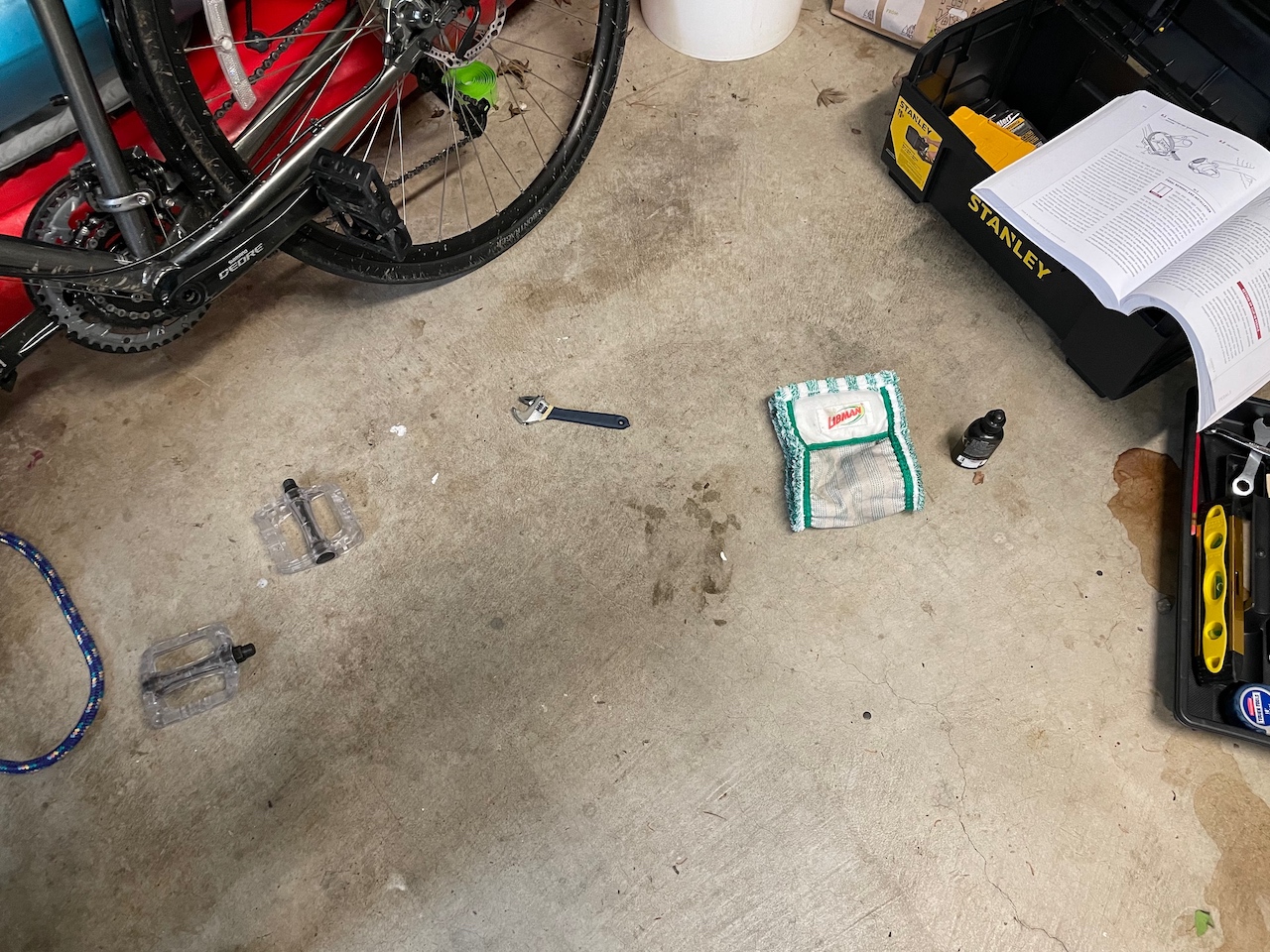Above all, you need grit. Biking in the suburbs means exposing yourself to constant danger. But as you navigate a concrete world hostile to unprotected human life, you may find pockets of nature and corners of yourself that you’d forgotten.
All suburbs are different, but they share common features that you must prepare for. Few, if any, bike lanes, poor sidewalk infrastructure, narrow shoulders, steep drainage ditches, and traffic patterns that concentrate all vehicles onto highways: this is the reality you’ll ride within. Any space designed for movement outside of a multi-ton vehicle assumes you’re out to stretch your legs for a minute, not travel.
To get anywhere, you’ll flow, like all vehicles, along the Strip. If you aren’t familiar with the layout of typical American suburbs, the Strip is a high-speed, multi-lane road that connects suburban areas with other suburbs, cities, and interstate highways. On the Strip, you’ll contend with long-bed trucks quaking the earth alongside rivers of noisy street-racers, SUVs, and pickup trucks. Shops, restaurants, and gas stations all cluster along these roads in lots with huge parking lots and little dedicated walking space, let alone bike parking.
You may be able to piece together paths that avoid the Strip, and we’ll come back to that. However, if you need to get somewhere quickly, there is no avoiding it. So you’ll grit your teeth and enter a roadway strewn with debris and choking fumes, with four to eight lanes of traffic and vehicles traveling 40 to 60 mph. Remain vigilant. Because cyclists are a distant afterthought in this place, any bike lane, if you’re lucky enough to have one, will be poorly maintained and present constant threats. Low-lying tree branches, sand bags, broken bottles, piles of dirt, uneven metal grates, rocks, shredded plastic and metal shed by passing cars: you’ll encounter all of it. Drop your body low to avoid obstacles, keep your wrists loose to absorb the shock of rubble through the bike’s frame, and ride with the strongest tires possible. Falling into the path of a semi-truck would be fatal.
You’ll have to veer into the road eventually, though. Construction crews find bike lanes a convenient place to drop signage, so roadwork signs often consume the entire lane, forcing you to merge. Depending on where you live, you may have the right, as a cyclist, to enter the stream of traffic as a slow-moving vehicle in this scenario. But do you really want to die that badly? The speed difference between a Ford F-150 and your bike on a 40 mph road is so high that it’s often safest to execute a lift-and-shift maneuver onto the sidewalk and then back.
You might ask at this point: why ride in the suburbs at all? First, you may not have a choice. Or, if push came to shove, you could drive, but instead, you choose to ride for exercise or enjoyment. Whatever the reason, enough rides on the Strip will make you question your choice. However, there can be upsides.
For me, the most immediate and visceral reason to ride in the suburbs is the joy of discovering new routes. Suburbs often evolve faster than any other landscape you could ride in: new roads open, streets are torn apart and reappear with bike lanes, and multi-use paths spring up overnight. Exploration feels continuous, even over the same ground.
Finding routes that avoid the Strip is a puzzle to solve through motion. It takes creativity and exploration to learn that if you ride down one residential street, there’s a dirt trail through a wood by a stream that connects to the road you’re trying to get to. Places like these aren’t on maps, and they might not even be maintained trails or paths. When they are on the map, no app will ever route you through them because the Strip is always faster, so you have to explore them yourself.
And there is nothing like the joy you feel the moment you find a route that passes by something worth seeing that you never would have discovered otherwise. Riding up an extinct cinder cone volcano to plunge downhill past a tiny vineyard — a daily ride like that is hard to come by in the city. Or finding a route that travels past a waterfall then up through a wide tract of farmland. It may be that riding anywhere in the Pacific Northwest, where I live, is uniquely wondrous, but whatever suburb you happen to be in will have its share of parks and unusual connections that you can discover as you put together your own routes.
You can also go multi-modal. Add a car and a bike rack and route-finding enters a new level, one you might not have had any interest in previously: driving can connect your ride to paved off-street paths, rural roads, and mountain biking trails.
Another benefit of riding in the suburbs is developing an endurance mind. A ride-or-die mind. Most casual cyclists are familiar with the edges of this mind, the hints of it. Any non-trivial cycling exposes your mortal body to the dangers of the road, vaulting you from the velodrome to the Thunderdome to compete with vehicles whose operators are sheathed in metal. Survival on a bike starts as a David vs. Goliath activity. It gets harder from there. You discover the actual contours of a landscape traveling up and down hills, which sounds romantic until you’re huffing and puffing up a 20% grade hill just to get groceries. Weather punishes you with UV light, smoky air, humidity, rain, hail, and snow, all of which present different problems for a cyclist. So anyone who has ridden a bike long enough will begin to develop an endurance mind. Suburban cyclists must perfect it.
Riding in the suburbs will sharpen your endurance mind because you don’t belong there. Roads in the suburbs are not built or maintained for pedestrians and cyclists. Sidewalks end abruptly, roads corkscrew deep into residential neighborhoods and terminate with no connections, or else roads end suddenly with “planned future expansion” signs. Broken glass and fast food trash litter bike lanes. As often as you can break out onto rural roads, you’ll find yourself in an industrial wasteland of semi-trucks, warehouses, and freeways. And there never seems to be an ideal place to lock up your bike. You’ll learn to lock up your bike anywhere your lock can function, scrabbling through decorative plants to access the post holding up a parking sign, or taking over a section of hand rail outside a grocery store. Bike parking, like everything else cyclists need, isn’t a given in the suburbs — you have to take it. How you respond to these conditions depends on the degree to which you’ve developed an endurance mind.
The most important thing I’ve learned about biking in the suburbs is that the hard parts have to be challenges, not problems. They must become obstacles to which you can apply creativity and grit. They can’t just be more problems. You have enough problems. In that case, you might as well give up and drive everywhere. What’s the difference between a “challenge” and a “problem”? Problems are things you complain about. Challenges define you.
When you orient yourself this way, biking in the suburbs works a strange alchemy. If, previously, the fact that you rode a bike was a small detail in your life, or you never rode a bike much, now it may become part of your identity. People will notice your bike and ask questions about it. You’ll be “that bike person,” and strangers will stop to tell stories about someone’s cousin who injured themselves in a crash, or how they recently bought a fancy new bike. But also, some of these people will remember a less car-dependent time in their lives. They’ll recall details from their childhood and college years. Maybe not too long ago they used to go touring on a bike that now hangs unused in their garage. A gleam will enter their eye because riding a bike is about the most fun you can have on wheels. They’ll think about riding again. And then one day you’ll see them bombing down a hill and you’ll hope they don’t fall and blame you for their broken arm, but you’ll also think: maybe I did something good here.
There is a political dimension to biking that you may encounter, too. If you’ve lived in a place where a lot of people ride bikes on the street and the majority of these people share liberal political values, you might have the view that “only liberals ride bikes.” This appears to be true of cycling culture in Portland, Oregon, where I used to live, and other cities like it. The view is false, of course. Suburban areas can be more diverse in ethnic makeup, income levels, and political views than some inner-city neighborhoods, so you’ll get a chance to check biases and assumptions while riding there.
You will meet people who clearly love bikes — mountain bikes. They’ll have spicy views on other types of cyclist, perhaps that “only people with a death wish ride bikes in the street.” Which makes sense because, of course, the biking infrastructure in suburban and rural areas is dangerous or nonexistent. On the other hand, you might find yourself at a backyard barbeque one day, talking to people you thought you’d never agree with about anything, when suddenly, everyone around you has paused to hold the same shared rapture for a simple, two-wheeled machine. So if, previous to riding in the suburbs, you considered the bike a utilitarian machine, if you only rode for transportation, you might discover in these suburban and rural riders a different side of cycling. Riding for pure pleasure, for enjoyment, or for the physical challenge of a hard trail.
And then there is the issue of repairs. If you’ve ridden in an urban area and are new to cycling in the suburbs, you’ll find that there aren’t any neighborhood bike shops. In many cities, but especially cities with good biking infrastructure, you can drop into a shop for repairs along any common cycling route, and you’re also likely have a mechanic in your neighborhood. What you don’t realize before riding in the suburbs is that easy access to bike mechanics makes you lazy. Without mechanics, you’ll have to learn how to change a flat tire, wrap your handlebars, replace your brake pads, or whatever you’ve been avoiding. Doing so is easier today than it’s ever been, with so many high-quality instructional videos available for free. Check out Park Tool’s YouTube channel to see some of the best.
Learning how to do your own repairs will snowball quickly. You’ll see that many problems you might normally take to a bike mechanic are solvable in your garage with simple tools — and solving them is extremely rewarding. You might also discover unexpected new allies: for example, the REI in my neighborhood offers both standard and e-bike repair services at a discount to members. They also run workshops on basic bike repair. So you’ll learn to rely on yourself more, and maybe sometimes you have to drive a ways to take the bike in when you bite off more repair than you can chew.
Finally, let’s talk about e-bikes. They’re controversial among cyclists, I know, and believe me, I love the feel of muscling up the steep hills that surround my house, or taking the panniers off and just riding around a while to relax. And yet, when I’m short on time and have to take the Strip, I feel every Ford F-150 driving by in my bones. Because of the speed difference between vehicles and my bike on the Strip, I’ve come to prefer riding an ebike when I’m short on time or going long distances.
My Tern GSD can take me from the suburbs to the city at a sustained 20 mph pace. But my love of ebikes isn’t purely about the utility. Only the first bike I rode as an adult many years ago, a hand-me-down touring frame from my cousin Phil, elicited the same raw joy that riding an ebike does now. Cresting the top of a steep hill on my way to a work meeting, and catching the view before I bomb down the other side, then arriving without a drop of sweat on my body, astounds me. An embarrassing number of times over the years, I’ve rushed to a meeting by bike, running late, only to spend the next hour perspiring through my shirt, with salt in my eyes. For all these reasons and more, an ebike is easily the best purchase I’ve ever made. Still, I try not to think about my odds of surviving an F-150.



